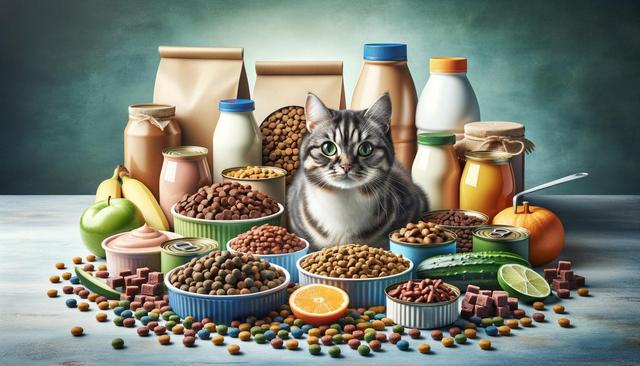Understanding Your Cat’s Dietary Needs
Every cat is unique, and so are their dietary requirements. Whether you have a playful kitten, a relaxed indoor adult cat, or a feline with a sensitive stomach, choosing the appropriate dry food is essential. Cats are obligate carnivores, which means they require a diet rich in animal-based proteins. For this reason, high protein dry cat food plays a crucial role in supporting muscle development, energy, and overall well-being.
When choosing a dry cat food, consider factors such as your cat’s age, weight, activity level, and any medical conditions. For instance, growing kittens need a different nutrient profile than senior cats. The best dry food for kittens will typically contain higher levels of protein and fat to support growth and development, along with essential vitamins and minerals like calcium and DHA.
Providing the right food tailored to your cat’s needs can help prevent common issues such as obesity, digestive upset, and urinary tract problems. A well-balanced diet is the foundation of a healthy life for your feline companion.
Dry Cat Food for Sensitive Stomachs
Cats with sensitive stomachs can experience symptoms such as vomiting, diarrhea, or loss of appetite. In such cases, selecting the best dry cat food for sensitive stomachs can significantly improve their quality of life. These formulas often feature easily digestible ingredients, limited components, and added prebiotics or probiotics to aid digestion.
Look for products that include:
- Single-source animal proteins
- Limited ingredient lists
- No artificial additives or fillers
- Fiber-rich ingredients like pumpkin or beet pulp
Transitioning to a new food should be done gradually to avoid further digestive upset. Mix the new food with the old one over 7–10 days, gradually increasing the proportion of the new food until the switch is complete. Monitoring your cat’s health during this period is important, and any persistent issues should be discussed with a veterinarian.
High Protein Options for Active and Senior Cats
Protein is a cornerstone of a healthy feline diet, especially for active cats and aging felines. High protein dry cat food supports lean muscle mass, promotes energy, and helps maintain a healthy weight. This is particularly important for cats that spend time outdoors or are more energetic by nature.
Senior cats also benefit from diets rich in protein, but it’s essential to choose formulations that are easy to digest and support kidney function. Some signs that your cat might need a higher protein diet include:
- Loss of muscle tone
- Decreased energy levels
- Weight loss despite a normal appetite
Always ensure that the primary ingredients in the dry food are high-quality animal proteins, such as chicken or fish. Avoid foods where grains or plant-based proteins dominate the ingredient list, as these may not provide the same nutritional benefits.
Choosing Food for Indoor Cats
Dry cat food for indoor cats is specially formulated to meet the reduced calorie needs of less active felines. Indoor cats tend to exercise less than their outdoor counterparts, which can lead to weight gain if not properly managed through diet. These formulas often include ingredients that support weight control and help reduce hairballs—another common issue for indoor cats.
Key features of dry food for indoor cats include:
- Lower fat content to manage weight
- Higher fiber to promote digestion and reduce hairballs
- Added vitamins and minerals for a balanced diet
Maintaining an indoor cat’s health goes beyond food. Providing enrichment through toys, climbing structures, and scheduled playtime also contributes to a healthier lifestyle. Still, nutrition remains the foundation of their overall well-being, and the right dry food plays a significant part in that equation.
Evaluating Top-Rated Dry Food Brands
With so many options on the market, finding a reliable product can be overwhelming. Focusing on top rated dry cat food brands can be a great starting point. These brands usually earn their reputation through consistent quality, transparency in sourcing, and positive customer feedback.
When evaluating a dry food brand, consider the following:
- Ingredient transparency and sourcing
- AAFCO (Association of American Feed Control Officials) compliance
- Positive reviews from veterinarians and pet owners
- Specialized formulas for different life stages and health needs
Reading the ingredient label is crucial. The first few ingredients should ideally be animal-based proteins, and any added supplements should serve a clear nutritional purpose. Avoid foods that rely heavily on fillers like corn, wheat, or soy, especially if your cat has known sensitivities.
Conclusion: Tailoring Nutrition to Your Cat’s Needs
Selecting the right dry cat food is more than just picking a popular brand—it’s about understanding your cat’s needs and choosing a food that supports their health at every stage of life. Whether you’re searching for the best dry cat food for sensitive stomachs, a high protein dry cat food for energy and growth, or the best dry food for kittens transitioning from mother’s milk, the goal is to provide balanced nutrition that aligns with your cat’s lifestyle.
Indoor felines benefit greatly from dry cat food for indoor cats that supports healthy weight and digestion, while pet parents can rely on top rated dry cat food brands for consistent quality. Always consult with a veterinarian when making significant dietary changes, and stay attentive to how your cat responds to their food to ensure they thrive for years to come.




Leave a Reply